Office Design Trends for 2024
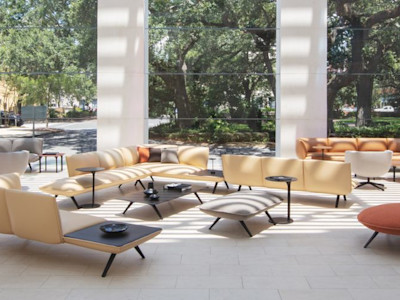
As we start to close out 2023 we say hello to a new year and goodbye to old office trends. While many office trends will be carried over into 2024, we are poised to witness a notable shift in focus. The forefront of office design trends highlights the strategic utilization of spaces by companies, their commitment to social responsibility, and the amenities provided to employees. Many of these trends, while often described as emerging, are, in fact, becoming the central focus of cutting-edge design. As the office landscape changes with the widely adopted hybrid model, remote work, and the spotlight being on employee wellbeing, the way companies are adjusting is extending beyond their operations. Return-to-work initiatives and the need to create experiences for employees is driving the reset for what is important to companies and employees. But how do these trends influence office furniture pieces themselves?
Social Responsibility
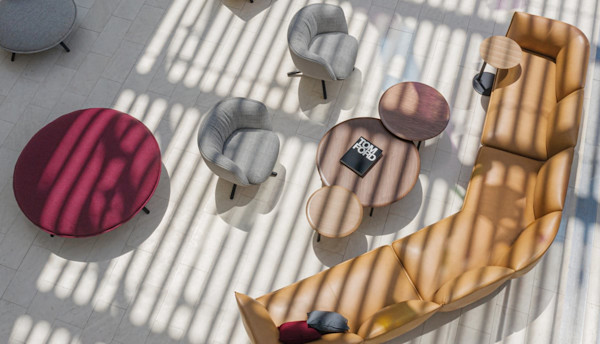
>>Find ways to reflect your company image in your office furniture.<<
For a while, companies have embraced their social responsibility. This is done through initiatives, operations, or advocation. This is usually reflected through their company image, but now it’s being reflected in the office. A design trend that is becoming a growing focus is sustainability. Solar power or other forms of renewable energy might come to mind when thinking of sustainability, but companies are also able to contribute to reducing their environmental footprint by being mindful of the furniture they choose. When determining your employees' workspace, consider the growing importance of sustainable sourcing, material transparency, and the use of recycled materials.
Work resorts feature well-appointed rest areas, outdoor seating zones, and fitness facilities, elevating the overall work experience.
Another sustainable design trend is how we use natural light. Some don’t have the luxury of using natural light. However, office buildings that have access and the ability to use natural light can benefit greatly. Using natural light in the office can help reduce utility costs and energy. Not to mention, natural light is proven to increase mood, productivity, and overall well-being. This brings us to the next focus in office design.
Well-being
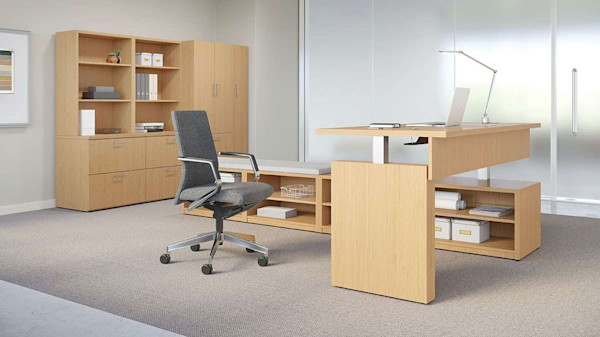
>>Discover how our product collections can promote employee well-being.<<
As companies are still bouncing back from the COVID-19 pandemic, they’re still trying to figure out how to transition employees back into the workplace. Enter, employee wellbeing. One way companies can combat the resistance to return to the office is by providing amenities and perks that workers get to enjoy while working remotely. These perks range from wellness pods to gyms to elaborate break rooms. The idea is that the companies can create an experience for their employees that they cannot replicate themselves remotely. Integrating AI and other advanced technology into the office that can help employees with mundane tasks, make their jobs easier, and make them more efficient might just make the commute worth it.
Office Layouts
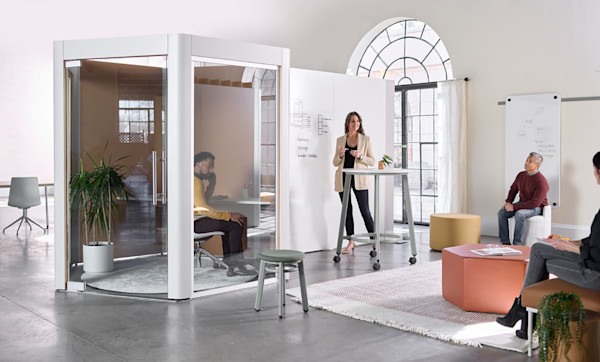
>>Discover our solutions for your perfect office layout.<<
The office layout debate has been going on since companies realized the inefficiency of cubicle farms. While this office layout might work for some industries such as call centers, it is far from a one-size-fits-all solution. Transitioning toward more modern layouts has helped companies move away from the closed-off cubicles that prevent socialization, collaboration, and innovation. There are a few office layout trends that we should look for in the coming year. One fast-growing idea for office layouts is work resorts or office hotels. While this might sound like a place you’d go for an office retreat, it’s far from that. The surge in popularity of office hotels can be attributed to the exceptional benefits they offer employees. This innovative layout revolves around cultivating a tranquil and upscale ambiance, emphasizing comfortable seating, a welcoming atmosphere, and dedicated spaces for respite from daily routines. Work resorts feature well-appointed rest areas, outdoor seating zones, and fitness facilities, elevating the overall work experience.
When determining your employees' workspace, consider the growing importance of sustainable sourcing, material transparency, and the use of recycled materials.
Another layout that we will continue to see grow in popularity is the hybrid layout. The hybrid layout focuses on multifunctional spaces that adapt to employee needs. This layout provides private areas, collaborative areas, and shared spaces. This layout will become even more popular as companies adapt to the ever-changing landscape of hybrid and remote work.
Biophilic Design
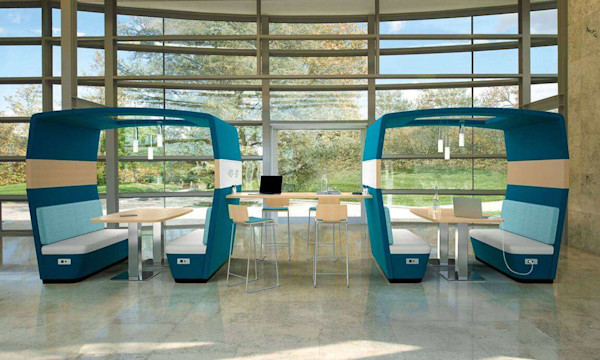
>>Our wide range of products can easily incorporate biophilic designs.<<
The word "bioliphic" is used often in office design. But what does it really mean? A biophilic design means you’re incorporating nature into your office. This includes everything from natural color schemes to cascading water features in reception areas. Bringing the outdoors indoors might be a little puzzling, but there is overwhelming evidence that this type of design makes a difference in how employees work. According to Gensler, a biophilic design can lead to a 6% increase in productivity and up to a 15% increase in creativity, and the design can produce results almost immediately. Incorporating a biophilic design into your office doesn’t necessarily mean having grass walls or planters in the middle of your office. It can be something as simple as suggestions of nature through textile patterns or outdoor spaces. While nature might not be synonymous with a modern office design, the focus on creativity and employee wellbeing will help it find its place in the office. Creating a space where employees are able to feel connected with nature while they work can help them feel calm. Studies continue to uncover the benefits of biophilic designs in the workplace. As we realize just how much we feed off of natural elements, the biophilic design will continue to carve its own space in the modern office.
Keeping Up with the Times
Office design is becoming more important to employees. In some cases, the office environment determines where employees look for employment. Office design is an important part of employee satisfaction and productivity. The majority of emerging office design trends come as a result of research-based evidence. As we continue to learn more about preferences and what makes employees successful, trends will come and trends will go. But for now, we know what works. As we move into 2024, these trends will become more prevalent and office design will become even more intentional.
Want to learn more about designing a hybrid office? Check out our comprehensive guide!
Ready to upgrade your office environment with these 2024 design trends? Check out these related posts:



